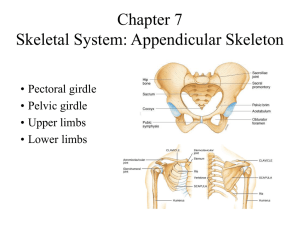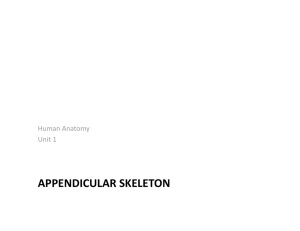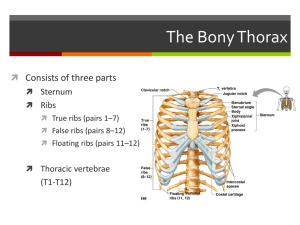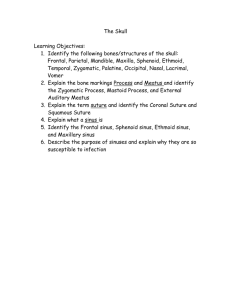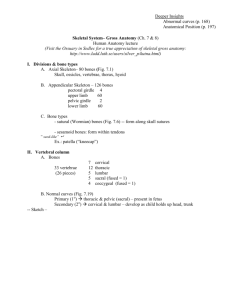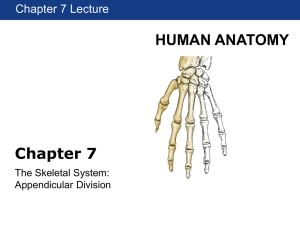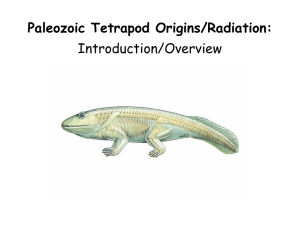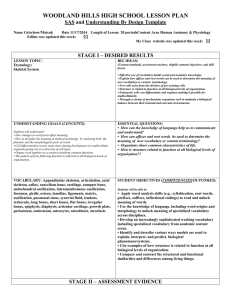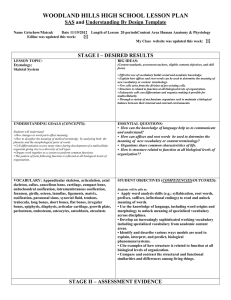Training
advertisement
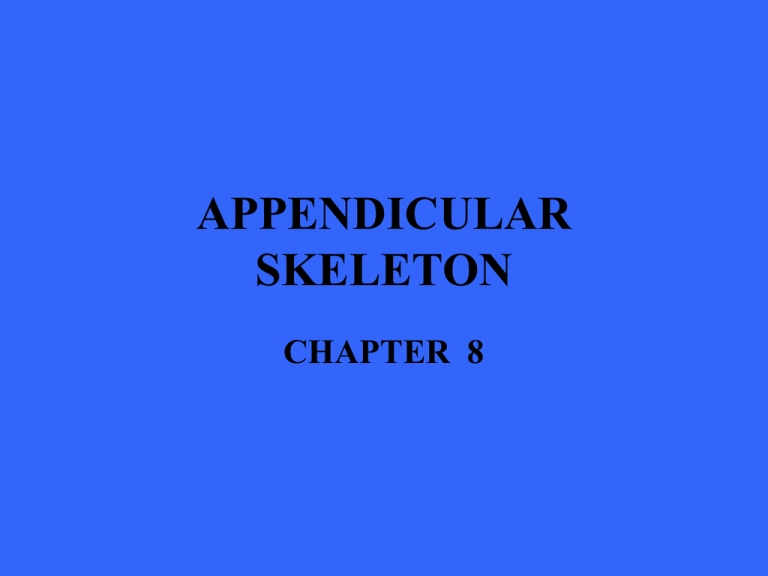
APPENDICULAR SKELETON CHAPTER 8 THE PECTORAL GIRDLE SECTION IV Pectoral or Shoulder Girdle Consists of two bones, the anteriorly positioned clavicle and the posteriorly positioned scapula Pectoral girdle is a loosely attached, held in place largely by musculature attached to the thorax and the vertebral column Only direct ligament attachment exists at the sternoclavicular joint Frees girdle to move over the thorax as the need arises Pectoral Girdle Flexible and Mobile Pectoral girdle is very light to allow the upper limb flexibility and mobility not allowed anywhere else in body This is possible because only the sternal end of clavicle is attached to axial skeleton thus allowing the scapula to move across thorax and the arm with it The socket of the shoulder joint is shallow and poorly reinforced Although this arrangement does not restrict movement it is less stable Clavicles Clavicles are double curved bones extending along the superior thorax Attached on the sternal end to sternum and the acromial Attachment site or muscles of the thorax and shoulder Position scapula away from thorax Right Scapula Anterior Aspect Bone markings are related to – Joint structures – Muscle attachments – Nerve and blood vessels Right Scapula Posterior Aspect Bone markings are related to – Joint structures – Muscle attachments – Nerve and blood vessels Right Scapula Lateral Aspect Schematic representation of its orientation THE UPPER LIMB SECTION V The Upper Limb Arm – Humerus Forearm – Ulna – Radius Hand Wrist (8 carpal bones) Palm (5 metacarpal bones) Fingers (14 phalanges) The Humerus Radius and ulna Ulna is involved in elbow flexion Radius is involved with supination and pronation Carpals, Metacarpals, & Phalanges THE PELVIC GIRDLE SECTION VI The Pelvic (Hip) Girdle Attaches the lower limbs to axial skeleton Transfers the weight of the torso, head, and upper extremities to lower limbs Supports the visceral organs of the pelvis Secured by strong ligaments and deep sockets the joint is reinforced for stability Less range of motion in all planes of movement Female pelvic structure to facilitate childbearing Pelvis Pelvis Pelvic girdle is formed by a pair of coxal bones, each called an os coxae Each os coxae unites anteriorly at the pubic symphysis and with the sacrum posteriorly Each coxa is formed by the ilium, ischium and pubic which were separate during childhood but fused in adulthood Collectively the os coxae, sacrum and coccyx is called the pelvis Os Coxa Ilium – Superior Ishium – Posterior Pubis – Anterior Os Coxa Ilium – Superior Ishium – Posterior Pubis – Anterior Pelvic Structure and Childbearing The female pelvis reflects modifications for child bearing It tends to be wider, shallower, lighter, and rounder than the male Pelvic modifications accommodate the growing fetus as well as providing a birth canal wide enough to allow the infants head to exit at birth Pelvic inlet and outlet are critical to delivery Male and Female Pelvic Structures THE LOWER LIMB SECTION VII The Lower Limb Thigh – Femur Leg – Tibia – Fibula Foot (7 Tarsal bones) Instep (5 Metatarsal bones) Toes (14 Phalanges) Femur Tibia Fibula Bones of Right Foot Right Foot - Medial View Right Foot - Lateral View Arches of the Foot DEVELOPMENTAL ASPECT OF THE SKELETON SECTION VIII Developmental Aspects of the Skeleton Fontanels Spinal Curvatures Long Bone Ratio Changes in Female Pelvis Adult Skeletal Changes The Fetal Skull
